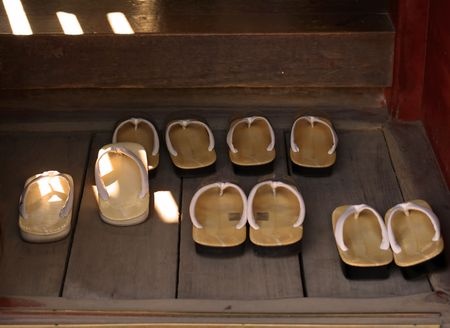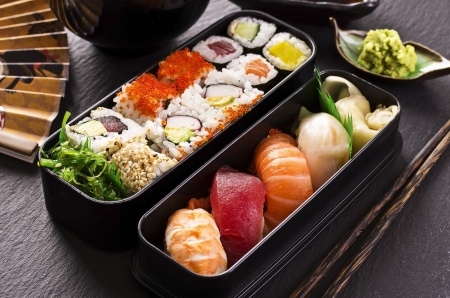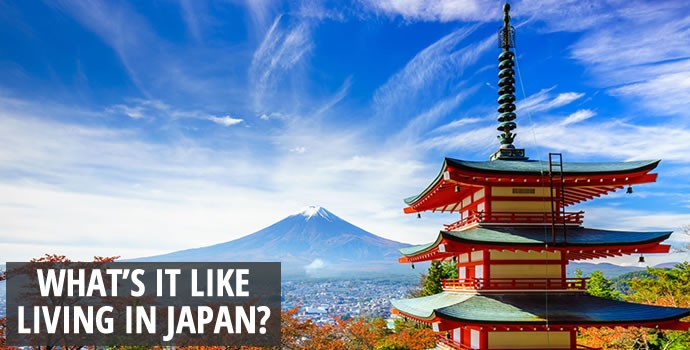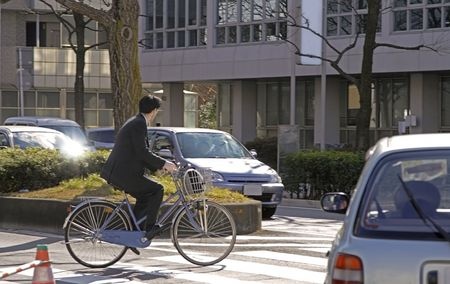“If there is an ideal time to visit Kyoto, it’s early April. With the cherry blossoms in full bloom, the city takes on an otherworldly persona. Despite the throngs of visitors, which provide continuous people-watching opportunities, there is a sense of calm, stillness, and peace as you pause to marvel at the exquisiteness of the cherry blossom, a shape simple yet intricate at the same time, gently shaded in pastel pink. You might experience the realization that you did not know the true meaning of beauty until this moment.”
– Dana Clarke, Oxford Seminars Instructor
Japan is one of the strongest ESL markets in the world, from housing, to transportation, to food, etiquette, and culture. Here you will find out what it is like living in Japan while teaching English abroad.
Living in Japan Teaching English
The ‘Land of the Rising Sun’ is a welcoming destination for many ESL teachers looking for employment and adventure in an exciting new culture. Japan has the perfect blend of ancient customs and cutting edge technology. From Tokyo to Tokushima, Japan offers big, bustling cities and quiet, rural communities.
The country is perfectly situated for trips to Bali, Hong Kong, Thailand, Vietnam, and other exotic locations as the strong yen makes traveling outside of Japan very inexpensive. Explore the ancient temples and geisha culture of Kyoto, relax in a hot spring, or take in the bright lights and stylish boutiques of Tokyo’s Ginza shopping district.
Finding a Home in Japan
Houses in Japan are generally smaller and very different from homes in the US. In Japan, the letters LDK are used to identify whether the house has a living room (L), dining area (D), and kitchen (K). For example, a 2DK apartment has two bedrooms, a dining room, and a kitchen.
While many modern apartments have Western style bathrooms, older apartments have “squatters” (toilets on the ground). Newer apartments tend to have a bath unit, which includes everything in one room. The bath units are covered with tile or plastic inserts, so don’t expect shower curtains or dividers.
Shared, dorm-style units and single bachelor suites are also common while teaching English in Japan. These often contain a futon mat which is stored in a closet during the day. Apartments are not usually insulated, so space heaters, electric floor mats, and Kotatsu (small tables with built-in electric blankets) are used to keep warm.
Flying to Japan when Teaching English Abroad
Some contracts may include paid airfare depending on the employer and length of contract. It’s common for employers to reimburse teachers for the cost of their airfare after they have fulfilled the contractual agreement, often in the form of a contract completion bonus. Therefore, ESL teachers should plan to pay for airfare, at least initially, before being reimbursed by their employer.
Health Care Benefits While Teaching English in Japan
Since 2007, the majority of ESL teachers are enrolled in the Japanese Employee Health Insurance system, Shakai Hoken. Although this usually provides subsidized health benefits, it could still be worthwhile for an ESL teacher to have additional coverage from their home country. It’s essential to establish what coverage you have, before departing for Japan. For further information regarding Japan’s health benefit system, visit Japan’s Health Insurance Bureau.
Technology in Japan
Japan is a technologically advanced country. ESL teachers should have no problem accessing the Internet or computers in Japan, as most work places will have Internet access; however, setting up home Internet can be a fairly drawn out and lengthy process. In the meantime, it is possible to access the internet with mobile phones, wireless hotspots, and internet cafés.
Transportation in Japan
Taxi
Like many developed countries, traveling by taxi is very expensive in Japan, with the price starting at a flat fee and increasing with the distance traveled. Tips for traveling by taxi include:
- Don’t whistle for a taxi: Waving or holding your hand above your head is acceptable.
- Don’t open or shut the door: Drivers will be able to control the doors with a remote.
- Have someone write down your destination in Japanese: Don’t expect the driver to speak or read English.
- Expect to wait in line: There are typically lines for a taxi at most train stations.
Train and Subway
The train is the most popular mode of transportation in Japan. It’s fast, frequent, and comfortable, but can be expensive. The Japanese National Tourist Organization (JNTO) provides English timetables for all major trains.
HyperDia is a useful English website that provides users with the schedule, traveling options and cost to travel between the two stations. Subways are very clean, efficient and affordable, but can be extremely crowded during rush hour.
Bicycle
Bicycles are a very common mode of transportation among Japanese nationals and foreigners alike. If foreigners choose to purchase or rent a bicycle, it’s important to become familiar with Japanese traffic regulations and signs.
Bus
The bus can be a difficult mode of transportation for foreigners. Unlike the train and subway system, timetables are rarely in English. However, when travelling long distances, the bus can be a very cost-effective option for teachers when compared to the train.
Motor Vehicles
To drive in Japan, you must first obtain an International Driving Permit from their home country. The International Driving Permit is valid for one year and those staying longer must obtain a Japanese driver’s license. Documentation required for a Japanese driver’s license includes:
- Resident’s card
- Valid passport
- Driver’s license from your home country
- Small fee and eye test
For more information on obtaining a Japanese driver’s license visit Japan’s Embassy of the United States information page.
 Etiquette in Japan
Etiquette in Japan
Japan has many unique customs and rules of etiquette. You should try to learn some of the customs before arriving in the country.
The bow is a common greeting. Mastering the bow takes years of practice and can convey a variety of different messages. For example, the longer and deeper the bow, the more respect is expressed. Other examples of common etiquette include:
- Remove your shoes when entering a home and place them with the toes facing the door.
- The seat of a car directly behind the driver represents the place of honor.
- Do not step on the threshold of temples.
- Do not leave a social function before the guest of honor.
- Most workers will arrive early and start working immediately once working hours begin.
Bathing Etiquette
- Bathtubs are used for soaking and relaxing, not for washing. This is especially important when bathing at public baths and hot springs.
- Wash and rinse off all soap before entering the bathtub. Only use soap outside the bathtub.
- Tattoos should not be visible when bathing (unless at home) and will need to be covered.
Dining Etiquette
- It is proper to slurp noodles; it’s a sign of enjoyment and satisfaction.
- It is unacceptable to eat while walking.
- If someone offers to pay for a meal, it is polite to attempt to pay for their portion once or twice before allowing them to pay.
- It is unacceptable to fill one’s own glass; it may indicate that they are an alcoholic; however, you should be sure to fill the glasses of others that are empty.
- If you do not want any more food or drink, you should leave their glass or bowl half full.
While locals don’t expect foreigners to be aware of etiquette, you should attempt to follow common eating practices to show politeness and courtesy.
Chopstick Etiquette
Chopsticks hold a very special place in Japanese culture; take care to observe the following rules when using them:
- It is considered taboo to use mismatched chopsticks.
- Most Japanese nationals use their fingers when items are too large for chopsticks; cutlery may also be provided.
- Do not use chopsticks to move dishes.
- When taking food from a shared dish, follow the lead of your hosts.
- Do not stick chopsticks vertically in the food; this is only done at funerals.
- Do not pass food between another set of chopsticks.
- Do not lick or suck on chopsticks.
- Chopsticks should not be used to skewer foods.
 What to Eat in Japan
What to Eat in Japan
Japanese cuisine is one of the highlights of living in Japan. The dishes and flavors vary greatly so be sure to explore some of the dishes below!
- Takoyaki: Octopus in fried batter balls
- Onigiri: Triangular rice patties containing a variety of fillings
- Fugu: Raw pufferfish carefully prepared by master chefs
- Katsudon: A bowl of rice topped with deep-fried pork, egg and other ingredients
Finding American Food in Japan
Most major Japanese cities have specialty food or import stores that supply American foods. Just be aware that buying American food is much more expensive than buying Japanese food, so be adventurous and try the local cuisine!
Climate in Japan
Japan has a very complex climate. While it has four distinct seasons, the weather will depend on the location.
- Spring: The season of the famous cherry blossoms. Spring is warm with little rain. Those living along the coastline will experience more precipitation.
- Summer: Summer can be very hot and humid. The rainy season starts in southern Japan in May and June and eventually moves northward. Coastal provinces along the Pacific Ocean will endure more intense rainfalls and wind.
- Autumn: Autumn is similar to spring with relatively warm temperatures and low rainfall. Japan’s fall foliage is a sight to see.
- Winter: The Japanese have yet to adopt centralized indoor heating and with winter being the coldest season. In the north and on Japan’s seaside, heavy snowfalls occur throughout the season.
How to Get a Job Teaching English Abroad in Japan
Oxford Seminars’ Job Placement Service provides assistance with finding teaching jobs at ESL schools in Japan and around the world. We have formed partnerships with language schools worldwide that are searching for certified ESL teachers. Our Job Placement Advisors provide timely job placement assistance to help make your experiences abroad as rewarding as possible.
To learn more about teaching English in Japan, download our Course Guide, or attend a free information session near you!
Learn More:



 Oxford Seminars Blog
Oxford Seminars Blog 













